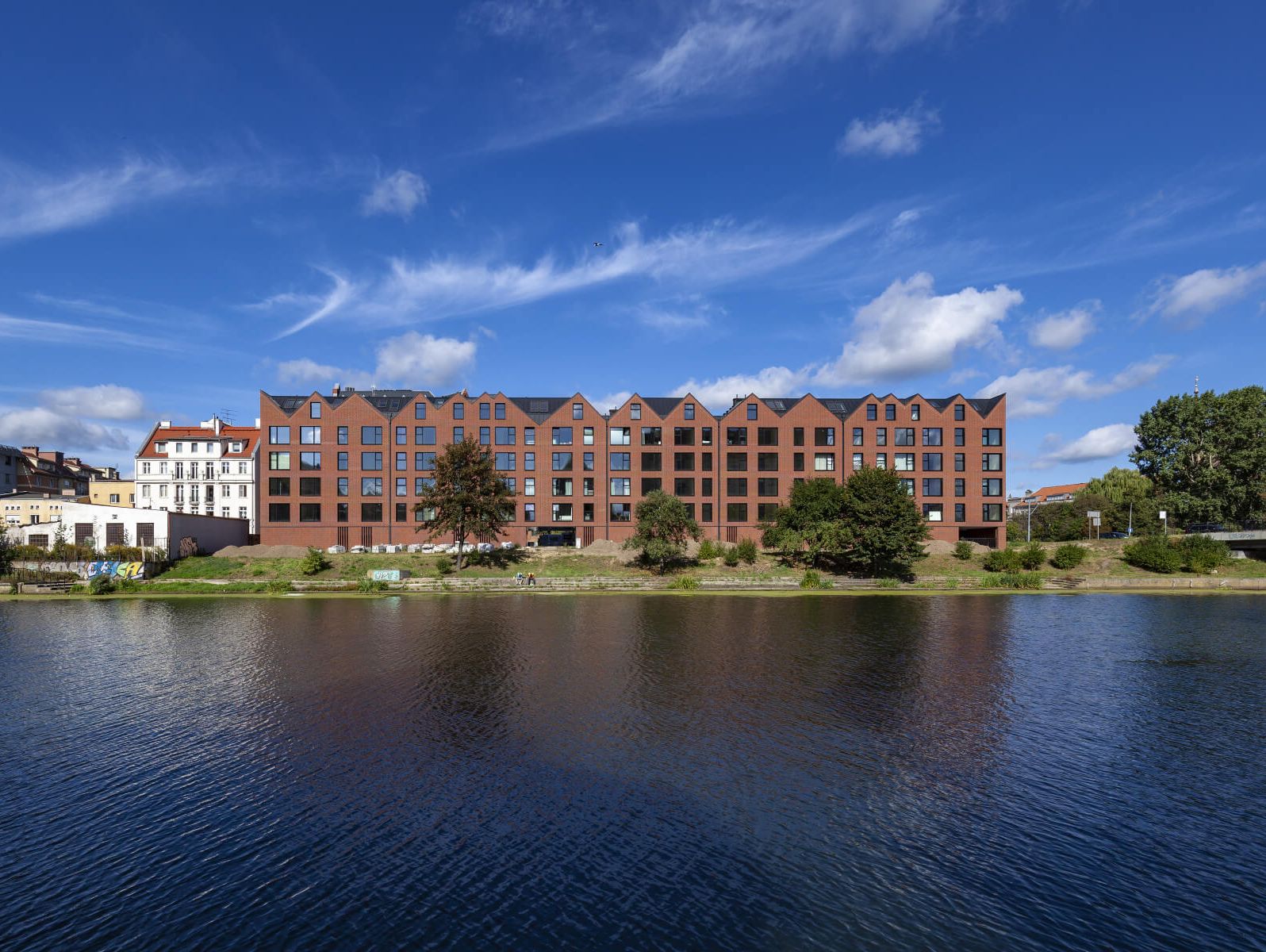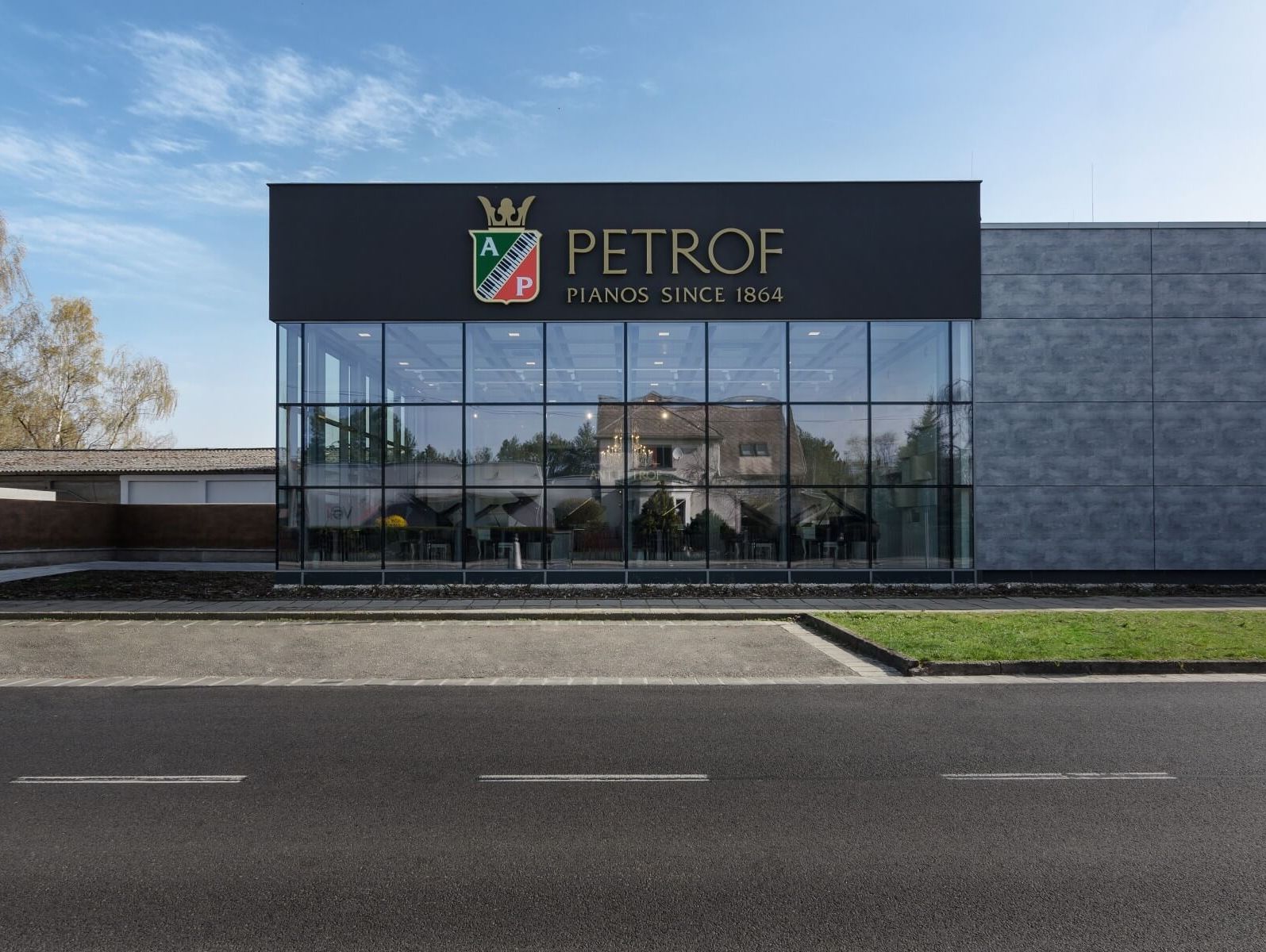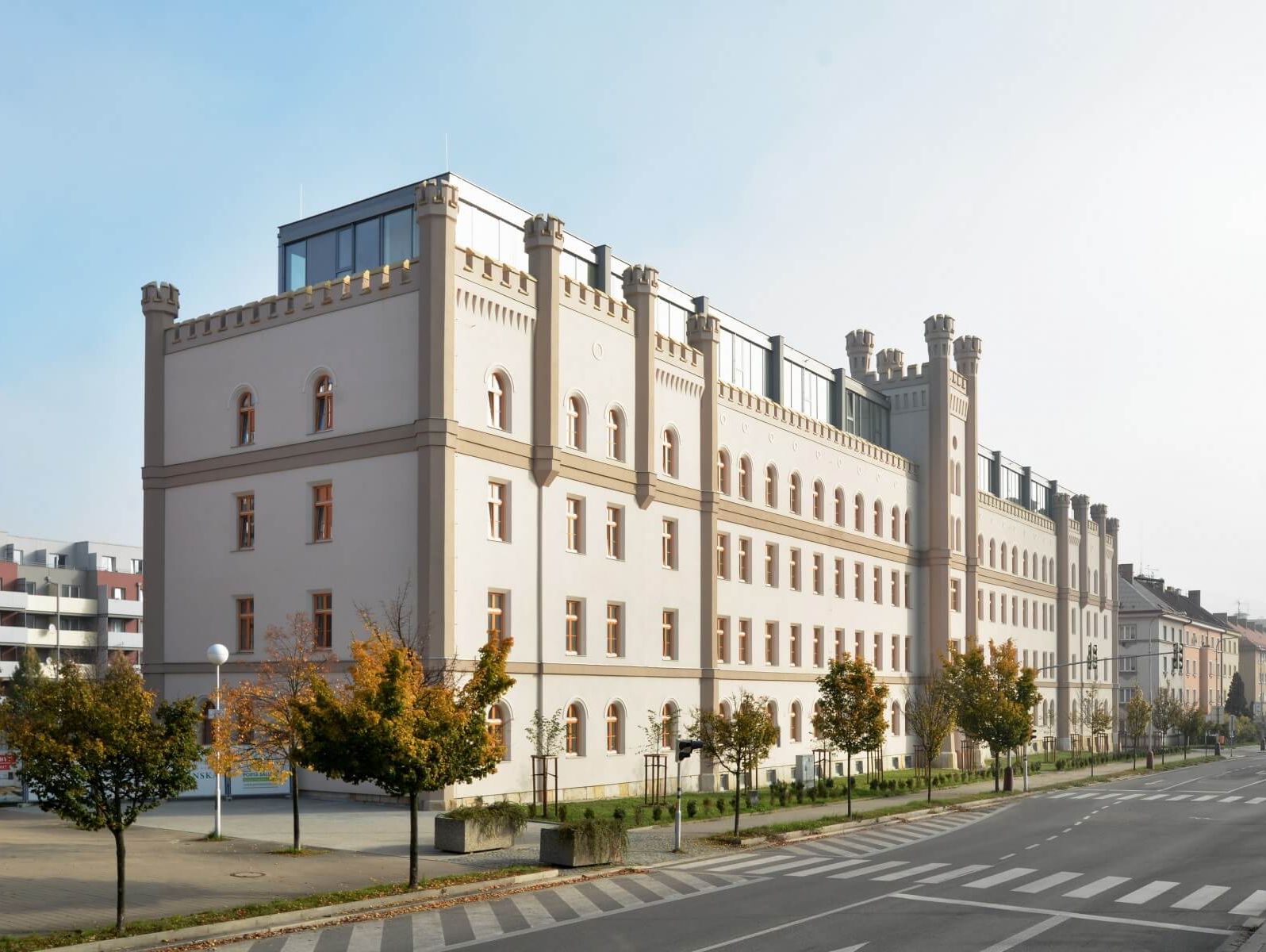5 principles of sustainable construction
Principle 1: use of low-carbon recycled raw materials
Sustainable construction pays special attention to the natural resources of our planet. In the process of designing and erecting buildings in line with this trend, raw materials characterised by low-emission production and the possibility of their reuse are more and more often selected.
The eco-friendly raw materials include wood and aluminium. Especially the latter material is gaining popularity as a substitute for much less eco-friendly PVC used in the production of window frames or doors. Due to the fact that aluminium can be recycled, when a building is demolished, we are able to reuse it for other developments, which significantly contributes to energy saving and achieving goals related to the closed circuit of raw materials.

Winter Residence, Gdańsk, Poland. Applied systems: MB-45, MB-78EI, MB-86
Principle 2: energy efficiency and passivity
One of the basic features of facilities erected in accordance with the requirements of sustainable construction is the minimisation of CO2 emissions to the atmosphere. Therefore, buildings designed in the eco-friendly spirit have to be not only energy-efficient but also passive as far as possible.
Achieving these criteria is possible not only due to the application of specific design principles (e.g. avoiding bay windows, using compact shapes), but also technologies, especially those related to the production and recovery of energy.
An excellent example of such a solution is the resilient city concept, which is based on designing a city in such a way that it is energy self-sufficient and resistant to external factors. An estate that fits in with the above concept – St. Peter Apartments – has already been constructed in Louisiana. With the use of solar technology and a network of batteries, it is able to independently produce the amount of electricity necessary for its functioning.
Principle 3: minimal interference in the natural landscape
Eco-friendly trends suggest that everyone involved in the development process that sustainable construction should harmonise with the natural surroundings of the building being erected. For this reason, subsequent developments in the ‘green’ spirit focus on designing the facility’s body in such a way that it interferes with the immediate vicinity as little as possible.
This is related, for example, to the use of natural curves of the landscape, taking into account trees and other plants growing in the immediate vicinity or (in the case of development in an urbanised area) adapting the shape to other buildings already existing in the vicinity.

PETROF Gallery, Hradec Králové, the Czech Republic. Applied systems: MB-70HI, MB-78EI, MB-SR50 HI, MB-SR50N EFEKT
Principle 4: a well-thought-out location
The trick is not only in the construction of a passive facility with the use of low-emission materials when it comes to the principles of sustainable construction. Its location is equally important.
The eco-friendly building has a positive effect on both the closer and further surroundings. For example, locating it in the vicinity of tram or bus stops will cause users to travel by public transport more frequently, leaving their own cars at the car park near their residence.
This, in turn, will result in lower emissions of harmful substances into the atmosphere and, as a consequence – cleaner air in urban areas.
Many planners and architects also draw attention to the important fact that contemporary sustainable property developments should fit in best with the present urban fabric. Maintaining the appropriate density of housing development (together with maintaining air corridors and user comfort) is necessary from the perspective of the profitability of public services. The appropriate density also minimises environmental costs, which grow exponentially if the real estate is planned on the outskirts of the city, where all connections and infrastructure have to be constructed: e.g. new roads, not to mention the existence of public transport.

Rezidence Jičínská, revitalizace kasárenc, Mladá Boleslav, the Czech Republic. Applied systems: MB-70HI MB-86
Principle 5: shortened chain of construction supplies
The last of the five most important principles of sustainable construction is the impact of the construction supply chain on the natural environment in the region where the development is located. In this case, the choice of suppliers for whom the optimisation of logistics and reduction of the carbon footprint is as important as the quality of elements they produce is of key importance. It is worth asking potential partners about specific certificates and evidence of sustainable logistics in order to avoid dishonest contractors.
A shorter supply chain means lower incidental transport costs, including the amount of pollutant emissions generated into the atmosphere by vehicles transporting individual elements to the construction site.
Let’s build a better future
More and more companies operating in the construction industry see the necessity to promote the trend of sustainable construction. Therefore, they initiate various projects aimed at increasing environmental awareness and finding solutions to stopping climate change. Examples of such projects include the Future Builders platform.
While talking about the common future of the construction industry, we can come up with many interesting solutions due to which housing and production processes will be better adapted to the challenging times of the climate crisis. By the erection of new facilities in the spirit of sustainable construction, we build a better future for ourselves and our children. The future in which taking care of the natural environment becomes a fundamental element of the social worldview.
